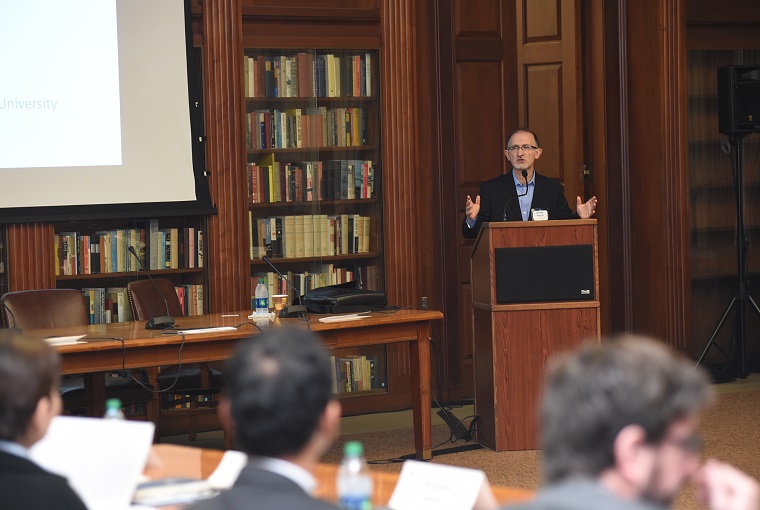Lectures of Opportunity: "A Theory of Political Violence"

About this Event
Event Information
U.S. Naval War College, LOO Coordinator
This event is not open to the general public
This event is only open to individuals with base access.About this lecture series
Lectures of Opportunity (LOOs) offer Naval War College (NWC) students, faculty, and staff an opportunity to learn more about national and international socio-political subjects that may be of relevance to the NWC community.
Synopsis
When does political violence (used in the context of interstate war, intrastate war, insurgency and counterinsurgency, or terrorism) lead to victory? When does political violence produce a stable peace compatible with the political goals of the victor and in which violence is no longer necessary? Much has been written on this question from the strategic, operational, and tactical points of view. In this paper, I examine this question from the socio-political standpoint. Specifically, I theorize the socio-political conditions for the emergence of a stable peaceful order out of violence.
I argue that the possibility of achieving victory – defined as a peaceful stable order compatible with the political goals of the victor – is greater against institutionally integrated adversaries, such as a modern state, for two reasons. First, while violence is being used, institutional integration on the part of the adversary is necessary for favorable tactical outcomes to be aggregated into favorable strategic outcomes and, ultimately, into the achievement of the victor’s political goals. Second, after a settlement has been reached through political violence, the level of institutional integration of the adversary determines the ability of its leadership to impose peace terms on its own fighting forces and recruitment base. Therefore, when an adversary exhibits low levels of institutional integration – as is often the case with insurgent or terrorist groups – it will be more difficult (i) to translate favorable developments in the battlefield into adversary willingness to sue for peace and (ii) to achieve a stable political order in which both fighters and members of recruitment base on the defeated side abide by the terms of the settlement.
To unpack these arguments, the paper examines the mechanisms through which violence can produce peace. Violence can lead to political order through destruction, transformation, or control. Destruction requires the physical elimination of the adversary and its base of recruitment. When the political goal of one side is the creation of a particular political order, destruction is untenable. Transformation takes place when the political identity of the adversary is changed in the course of the fighting so that the adversary’s forces and recruitment base no longer objects to one’s political goals. The greater the opposition between the political goals of the two sides, the harder it will be to achieve the transformation of the adversary. Therefore, when conflicts aim at determining the type of political order that will prevail and the two sides’ political visions are greatly different, the ability to achieve a stable peace depends on the third mechanism, control. Control requires the continued threat of violence to lead an adversary who remains opposed to one’s political goals to acquiesce to a stable order that upholds them. The task of control is facilitated by an institutionally integrated adversary, who can enforce the terms of the peaceful settlement on its own forces and recruitment base, placing the victor in a position of indirect control. When the adversary is only loosely integrated, the task of enforcing the terms of the peaceful settlement on its own forces and recruitment base falls directly onto the victor. Because each individual member or small group within the defeated side can determine whether to use violence and continue the fight, it is more likely that the victor will need to continue to use violence in pursuit of its political goals. The less integrated the adversary, the less likely that a stable peaceful political order will emerge.
This dynamic acquires particular importance in the context of threats that emerge from a society, not a state. Whereas state-based threats can be deterred through control of the state apparatus, societal-based threats require granular control of the entire base of recruitment, which is more likely to entail the continued use of violence in pursuit of political goals.
The paper illustrates these dynamics by analyzing the Afghanistan War (2011- ) and explores the implication of these arguments for state-society relations, legal theory, and the ethics of war.
Most Recent
8:00 a.m.
U.S. Naval War College, 686 Cushing Rd, Newport, RI 02841
U.S. Naval War College, 686 Cushing Road, Newport, RI 02841
U.S. Naval War College, 686 Cushing Road, Newport, RI 02841
8:00 a.m.
U.S. Naval War College, 686 Cushing Road, Newport, RI 02841
U.S. Naval War College, 686 Cushing Rd, Newport, RI 02841
